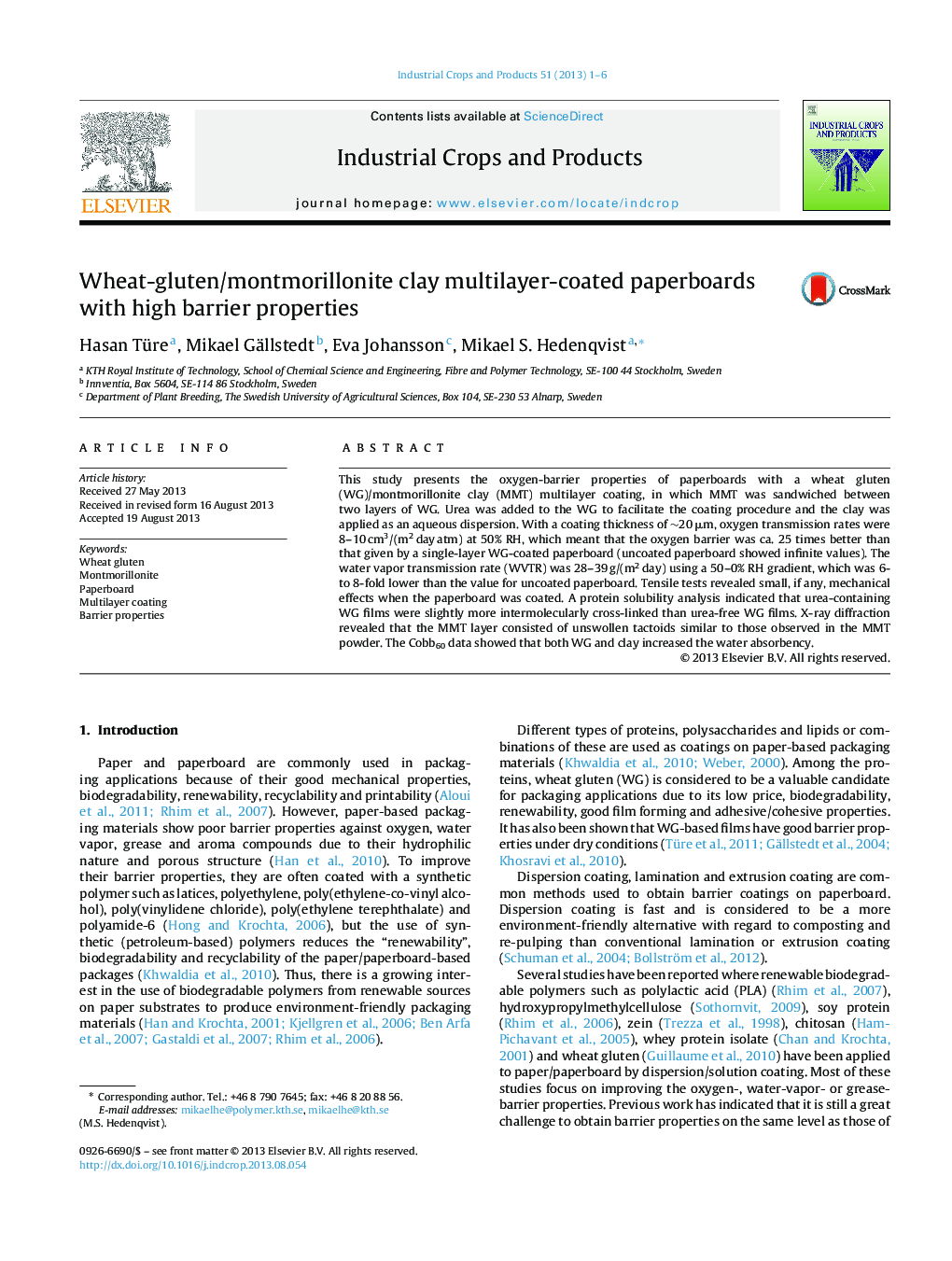| Article ID | Journal | Published Year | Pages | File Type |
|---|---|---|---|---|
| 6377182 | Industrial Crops and Products | 2013 | 6 Pages |
â¢A high-barrier solution using non-petroleum-based materials.â¢The oxygen barrier increased 23-26 times using a clay layer.â¢The multi-layer had a 6-8 times better moisture barrier compared to neat paperboard.â¢Urea facilitated the dispersion coating.â¢Urea slightly increased the degree of intermolecularly cross-linked protein.
This study presents the oxygen-barrier properties of paperboards with a wheat gluten (WG)/montmorillonite clay (MMT) multilayer coating, in which MMT was sandwiched between two layers of WG. Urea was added to the WG to facilitate the coating procedure and the clay was applied as an aqueous dispersion. With a coating thickness of â¼20 μm, oxygen transmission rates were 8-10 cm3/(m2 day atm) at 50% RH, which meant that the oxygen barrier was ca. 25 times better than that given by a single-layer WG-coated paperboard (uncoated paperboard showed infinite values). The water vapor transmission rate (WVTR) was 28-39 g/(m2 day) using a 50-0% RH gradient, which was 6- to 8-fold lower than the value for uncoated paperboard. Tensile tests revealed small, if any, mechanical effects when the paperboard was coated. A protein solubility analysis indicated that urea-containing WG films were slightly more intermolecularly cross-linked than urea-free WG films. X-ray diffraction revealed that the MMT layer consisted of unswollen tactoids similar to those observed in the MMT powder. The Cobb60 data showed that both WG and clay increased the water absorbency.
Graphical abstractDownload full-size image
